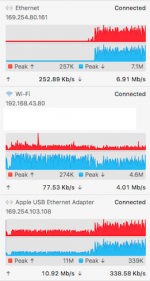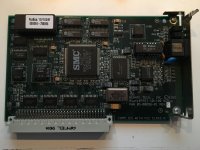That said, something strikes me as fishy about your results, else why would 10/100 cards have been made for NuBus Macs?
My guess is
entirely that people thought it was important and it was "cheap" to build, so someone did, even though there's extremely no reason to get it.
That you need to drop a G3 CPU in to even exceed what onboard 10 megabit can do is indicative, of how impractical this upgrade is in the real world. It's a checkbox item, not a real performance boost in any meaningful way.
I don't bother with benchmarking. Early machines run period specific software as fast or faster than later machines running their period specific software. Featuritis and bad code outpace Moore's law, 'nuf said.
Sure, but, however, comma: This is a scenario where using a benchmark can help set expectations on the performance of a specific subsystem.
In-situ, benchmarks are used to determine the viability or worth of a particular component upgrade or, for example, how much computer to buy at any given moment.
The gotcha, of course, is that it's important to know what the critical subsystem for your application is. Buying a RAM upgrade doesn't make sense for an app whose critical path is disk and buying a network upgrade doesn't make sense for an application whose critical path is CPU, for example.
To that end:
That's still slower than 10.4 and handshaking takes a big bite out transfers so you're probably a lot better off with the 10/100 NuBus Card. Even Beige G3 10bT will be noticeably slower than that, no?
10.4 vs 10 megabits isn't an awful lot.
Either some particular software had to have had some really special sauce going in or these cards just wouldn't have been worth it except to check a box, even though everyone knew the box being checked wouldn't at all be meaningful.
Somewhere up -thread, I talked about an FDDI add-in and the "big speed uplift" it provided for big file transfers using a special file transfer utility meant to work with that card's network protocol, and the reaction it got was essentially "that's still a miserable file transfer rate" - and, I mean, even 13 megabits per second would still be.
It
mostly comes down to a combination of Classic Mac OS being exceptionally bad and the hardware being pretty ho-hum.
I've seen some reports that even on plain Ethernet, there were different networking tools (Novell IPX for example) that are alleged to have been faster, but I haven't/don't have the resources to test that.


